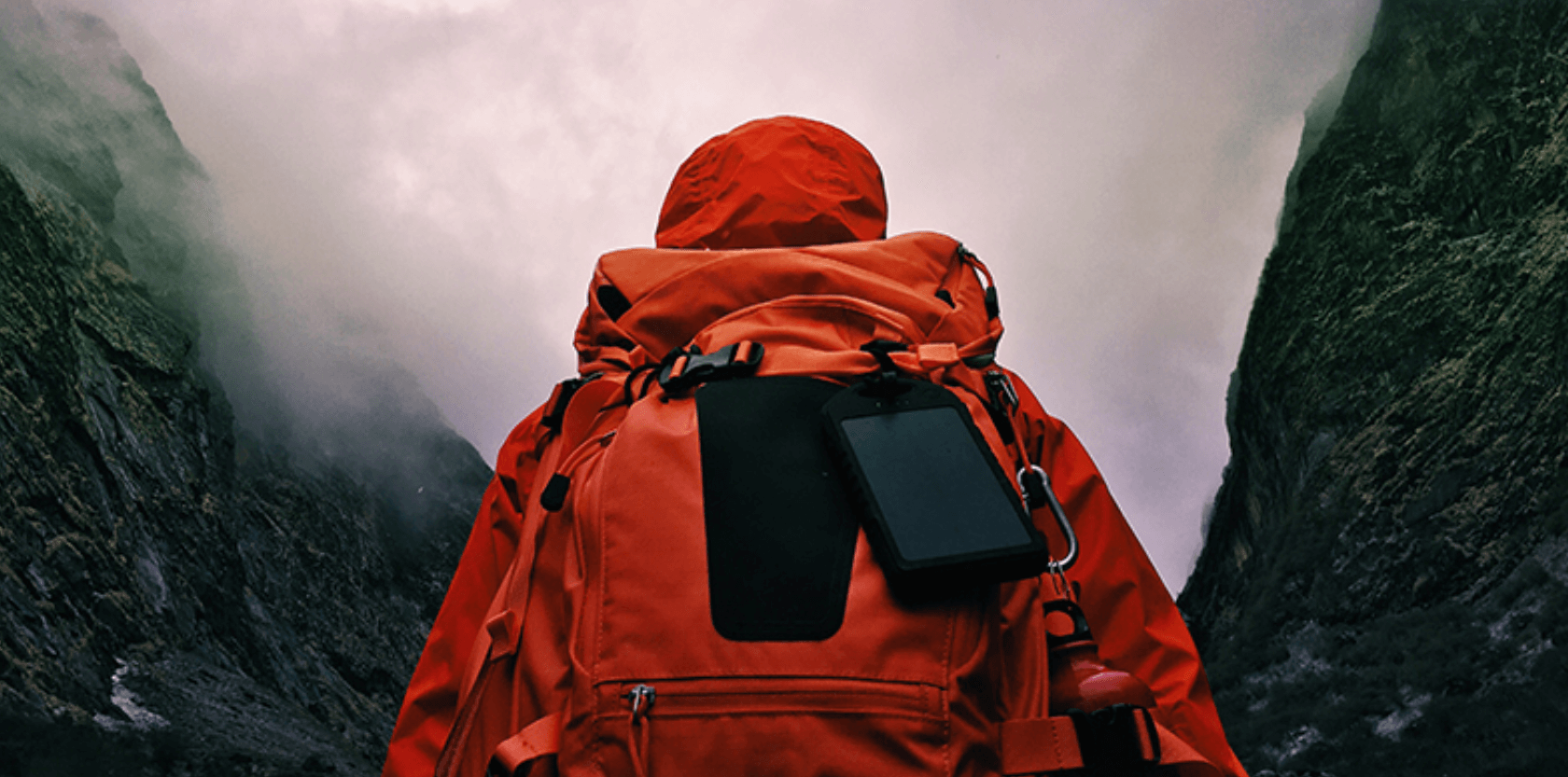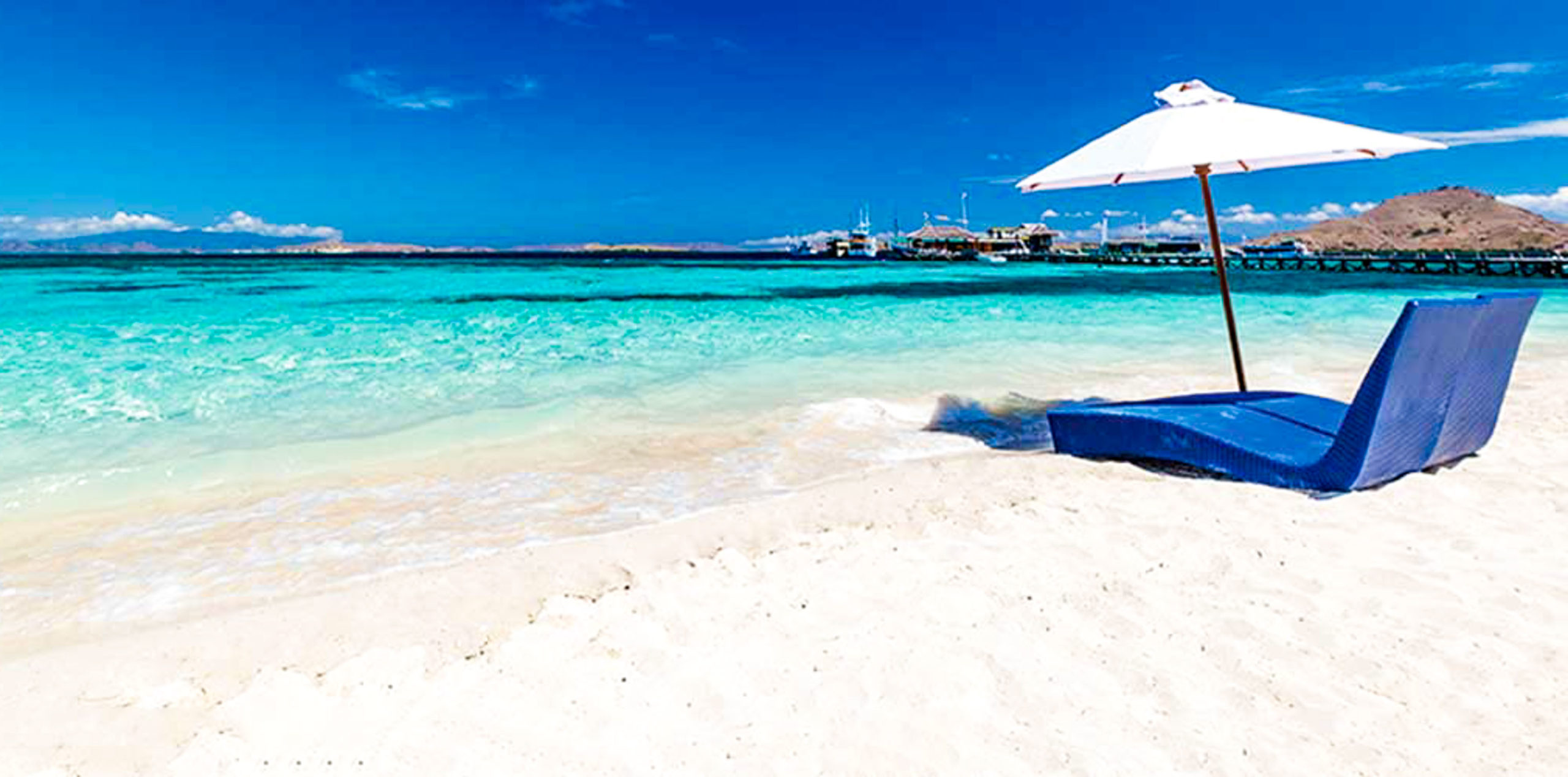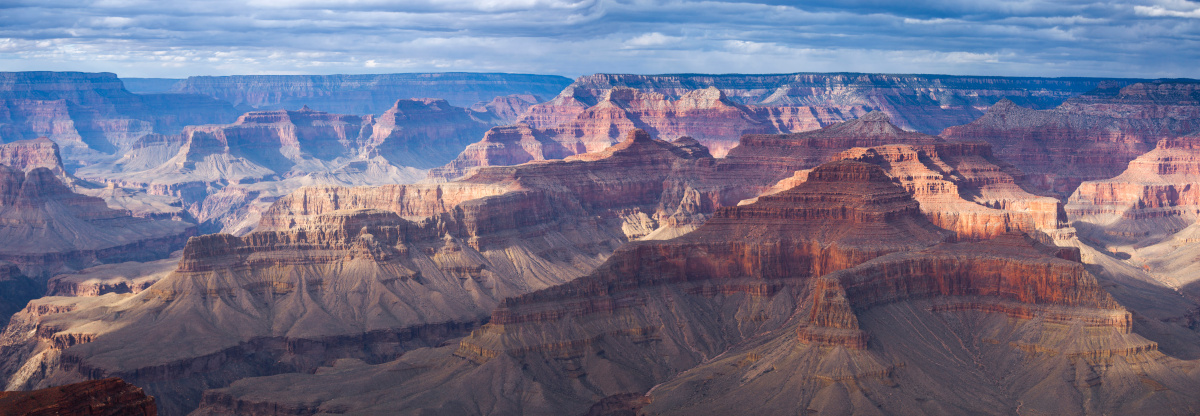
Trekking Insurance for the Grand Canyon
The Danger Within
So, whether your visit includes heading down to explore the South Kaibab trail, crossing the Colorado, or aiming for a Rim to Rim challenge, having Grand Canyon trekking insurance is more than a smart backup—it's essential.
The Grand Canyon looks like a gorgeous, striated, sherbert-hued playground, but it's also a high-risk desert environment. The terrain is steep, the sun is relentless, and emergency services are far from reach. Accidents and injuries happen.
As an example, in June 2020, a weekend of exceptionally hot weather triggered multiple search-and-rescue operations. Rangers responded to hikers in heatstroke or hyponatremia at locations such as Phantom Ranch and Indian Garden and several evacuations were done via helicopter to Flagstaff Medical Center.
This surge in incidents shows how quickly heat can incapacitate people, particularly when hydration, shade, and pace are mismanaged. Even experienced hikers can fall victim to unrecognized exhaustion, dehydration or heat stress.
Falls also remain a danger, especially on exposed overlooks and off-trail areas. In 2023, a teen fell nearly 100 feet from the Bright Angel Point. Helicopter rescue was impossible due to windy conditions, so high-angle rope rescue was deployed. The boy survived, but with nine broken vertebrae, a ruptured spleen, a broken hand and a collapsed lung.
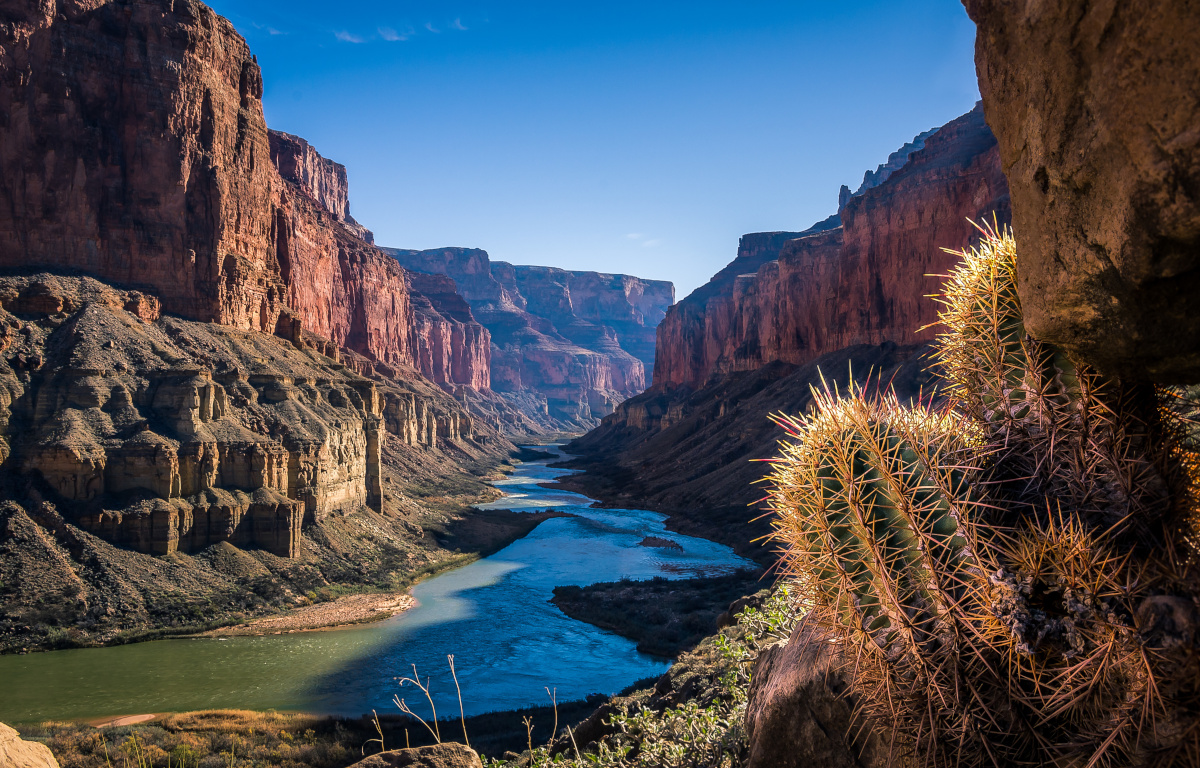
Grand Canyon Hiking & Safety Tips
Physical Training
Proper training is essential to prepare for the steep descents, strenuous climbs, and intense heat, especially if you’re planning a rim-to-rim hike or a descent to the Colorado River and back. Building strength, endurance, and resilience over several months will significantly increase your chances of a safe and enjoyable experience and help prevent injuries.
Start training at least three to four months in advance. Begin with moderate hikes, gradually increasing distance and elevation gain each week. Stair climbing, hill workouts, or treadmill sessions with incline can help simulate canyon terrain. Aim to hike with a loaded backpack similar in weight to what you’ll carry during the actual tri, as this helps your body adapt to the extra strain and helps prevent injuries.
Incorporate strength training, especially for your legs and core. Squats, lunges, step-ups, and planks build the muscle endurance needed for the constant downhill pounding and uphill climbs. Don’t overlook cardio workouts to improve overall stamina.
Hydration and heat conditioning are also crucial. The Grand Canyon can reach extreme temperatures, especially in the summer. Practice hiking in warm conditions while drinking adequate water and using electrolytes. Learn to listen to your body’s signals for fatigue and dehydration.
Finally, break in your hiking boots and wear them consistently during training. This reduces the risk of blisters and ensures comfort on the trail. Train with trekking poles if you plan to use them, as they can save your knees on descents (an important note: South Kaibab Trail descends about 4,780 feet over approximately 7.3 miles while the North Kaibab Trail offers a descent of about 6,000 feet over 14 miles to the Colorado River).
With dedicated preparation, you’ll be ready not only to tackle the physical challenge of the Grand Canyon but also to enjoy its stunning beauty with confidence and safety. It could be the difference between a safe trip or an accident or injury.
Packing for the Canyon
Packing the right gear is essential for a successful Grand Canyon hike. Conditions can vary widely based on the season, trail, and duration of your hike, so preparation is key. Start with a well-fitting backpack that distributes weight evenly and has room for all essentials.
Footwear is critical. Sturdy, broken-in hiking boots with good traction are a must. Wear moisture-wicking socks and bring an extra pair (or two). Sun protection is vital in the canyon’s exposed terrain: pack a wide-brim hat, sunglasses, sunscreen, sun-protecting lip balm, and lightweight, breathable clothing with long sleeves and pants for added coverage.
Hydration is a top priority. Carry at least three liters of water per person (more for longer hikes), plus electrolyte tablets or drink mixes. A water filtration system or purification tablets are smart additions for refilling at natural sources. Pack calorie-dense snacks like trail mix, energy bars, and jerky to maintain energy levels.
Other must-haves include a headlamp or flashlight with extra batteries, a basic first aid kit, a map or GPS, trekking poles, and emergency gear like a whistle and space blanket. If you’re camping, add a lightweight tent or bivy sack, sleeping bag and pad, and stove.
Pack smart and light. As they say, ounces equal pounds, pounds equal weight and weight equals pain. Efficiency and preparation make all the difference.
Safety and Etiquette
Safety and etiquette are crucial when hiking the Grand Canyon, where rugged terrain and extreme conditions can pose serious risks even to experienced hikers. Understanding and respecting the environment, your limits, and fellow hikers helps ensure a safe and enjoyable experience for everyone.
First and foremost, know your physical abilities and plan a route accordingly. Many hikers underestimate the difficulty of hiking downhill first and then having to climb back up in the heat and elevation. The National Park Service advises against attempting to hike from the rim to the Colorado River and back in a single day. Always check the weather forecast as temperatures can soar above 110°F (43°C) in the inner canyon, and sudden storms can cause flash floods.
Hydration and nutrition are key. Drink water consistently, but also replenish electrolytes to prevent hyponatremia (low sodium levels). Eat salty snacks and rest often in the shade.
Respect trail etiquette by yielding to uphill hikers (and all mules or mule trains), keeping noise levels down, and packing out all trash. Stay on designated trails to protect fragile ecosystems and prevent erosion. Wildlife should never be approached or fed.
Travel in small groups when possible, and always let someone know your itinerary. Cell service is unreliable, so carry a whistle, mirror, or personal locator beacon for emergencies.
Some specific tips to keep in mind to help ensure you have a safe trip and help prevent accidents or injuries:
- Start before 6am in summer
- Hike down early, up late to avoid peak heat
- Always yield to uphill hikers and all mules
- Leave no trace
- Don’t count on cellphone service
- Use sunblock and be sure to reapply throughout the day
- Hydrate, hydrate, hydrate – and considering bringing electrolyte drinks or using electrolyte drink mixes
- Take your time, as this is a marathon and not a sprint (so slow and steady is the way to go)
- During the summer, rest often in the shade
- Top off from potable water sources as often as possible
- An important note: when you come across non-potable water, be sure to dip your hat, handkerchief and t-shirts in it to provide a cooling effect as you hike on
Lastly, be patient and courteous to others on the trail. A simple “hello” or “on your left” can go a long way in maintaining a positive hiking atmosphere. Safety and respect, both for the canyon and fellow hikers, are part of what makes this journey so unforgettable.
Real-Life Lessons
Hiking the Grand Canyon teaches powerful real-life lessons that extend far beyond the trail. One of the most immediate is humility. No matter how fit or prepared you are, the canyon’s scale, heat, and elevation changes demand respect. It teaches you to listen to your body, to rest when needed, and to push forward with intention rather than ego.
Patience is another key lesson. Progress often feels slow, especially on steep climbs, but steady effort leads to success. You learn to break challenges into manageable steps—one switchback at a time.
The hike also fosters resilience and self-reliance. You carry everything you need, adapt to changing conditions, and face discomfort head-on. In doing so, you gain confidence in your ability to handle adversity.
But remember these important notes:
- Pay attention to the time and when the sun is directly overhead, as most heat-related emergencies occur between 10 a.m. and 4 p.m.
- Personal locator beacons make rescues faster but don’t replace medical care
- Even familiar, popular trails like Bright Angel or South Kaibab hold hidden risks
- Heat kills slowly and hyponatremia and heatstroke often occur despite drinking plenty of water
Finally, the canyon instills a deep appreciation for nature and simplicity. Stripped of distractions, you’re reminded of what truly matters: water, rest, perseverance, and awe at the natural world.
Permit and Logistics Planning
Proper permit and logistics planning is essential for a successful Grand Canyon hike, especially for overnight or rim-to-rim trips. If you’re planning to camp below the rim, you’ll need a backcountry permit from the NPS. These permits are in high demand and must be requested months in advance.
For popular routes like Bright Angel, South Kaibab, or North Kaibab trails, permits can be competitive, so flexibility in dates and campsites increases your chances. If you’re staying at Phantom Ranch, reservations are separate and can be made through the official concessionaire.
Transportation logistics are another key consideration. Rim-to-rim hikers in the Grand Canyon often use shuttle services between the South and North Rims, which can take several hours and must be booked ahead of time. Also, plan for lodging near your start and end points.
Remember:
- Book backcountry permits months in advance
- Phantom Ranch requires online reservations and, even up to 15 months in advance, often sells out in minutes
- Monsoon season = flash flood watch
- Use official park shuttles
- Listen to rangers and ask questions of them and other park staff
Thorough preparation with specific travel plans ensures smoother travel, helps prevent delays, and enhances safety on your Grand Canyon journey.
Why You Need Trekking Insurance for the Grand Canyon
Heat Illness is the number one danger here. The inner canyon bakes even in spring and fall, and there’s little to no shade. Expenses for medical emergencies in the U.S. are notoriously high, and a helicopter evacuation from the inner canyon can run several thousand dollars.
NPS rescues aren’t free, and park closures, illness or weather events can cancel treks in an instant. Add in non-refundable permits and reservations at Phantom Ranch, and it’s clear: travel insurance for Grand Canyon hikes with the appropriate coverage protects your investment, your gear, and your life.
Common Risks for Grand Canyon Hikers
Heat Illness and Dehydration
- These are the top cause of evacuation in the park
- Water and shade can be hard to come by – if you can find them at all
- It’s been said before but take heed of this important note: temperatures on trails often exceed 110°F (43°C)
Ripcord policy benefits include coordinating helicopter extraction or medical transport if you collapse from heatstroke. The coverage plan will also connect you to doctors and support emergency decision-making from the field.
Injury and Strain
- Steep, rugged trails (with slick spots often caused by the mules) mean twisted ankles, falls, and overexertion are common
- Rim to Rim hikers often underestimate the elevation gain and sun exposure (and don’t forget that, unlike hiking a mountain, the hardest part, the climb back out, comes at the end, when you’re most fatigued)
- Evacuation for medical emergencies may involve litter, mule rescue or helicopter
Plans like Cavalry and Harbor include policy benefits and coverage for emergency medical reimbursement, hospital visits, and follow-up care after a trail incident.
Lost or Stolen Gear
- Gear theft happens at Grand Canyon trailheads and campgrounds, and especially from vehicles
- Expensive items (tents, poles, sleeping bags) can get lost by airlines, snatched from cars or simply just misplaced
- Wildlife can damage gear or it can be lost during your treks
Lost Gear Coverage protects your essentials. Look for insurance that has coverage benefits to replace vital trekking equipment if it’s lost or stolen.
Grand Canyon Trip Interruptions and Natural Hazards
- Flash floods during monsoon season (July–September)
- Rockslides, wildfires, or sudden park closures
- Shuttle delays or lodging issues due to weather or overbooking
Trip Delay or Interruption benefits cover non-refundable travel costs and expenses like backcountry permits, lodging, or pre-paid shuttles.
What to Look for in a Trekking Insurance Policy
Emergency Evacuation Coverage
- Helicopter rescues in Grand Canyon can cost $5,000+
- Many other insurance coverages exclude extractions from National Parks
- Redpoint’s Ripcord specializes in remote and high-risk rescues
Trip Delay and Interruption
- Phantom Ranch reservations and Backcountry permits are non-refundable
- Rain, fire, or park shutdowns can cancel or delay your Grand Canyon trip (as can illness)
- Choose a plan with Trip Interruption + Delay benefits, and covers last-minute changes due to weather, illness, or trail/park closures.
Gear and Baggage Protection
- Tents, sleeping bags, stoves are critical items – so be sure they’re covered
- Coverage for stolen or damaged gear or lost personal effects is often missing from cheap plans
- Harbor offers strong baggage protection
If you place your pack in the wrong spot and it rolls down into the canyon or gets stolen while left outside a tent, insurance helps you replace it fast.
Medical Assistance and Remote Support
- The nearest full hospital is hours from most trails (For example, the full-service hospital in Flagstaff, Arizona is approximately 80 miles away from the South Rim.)
- Redpoint offers 24/7 medical coordination, field advice, and assistance
- Support includes coordination with rangers, hospitals, and transportation
Which Redpoint Plan is Right for You?
|
|
|
|
|
|---|---|---|---|
| Plan Description | Best evacuation and rescue with the premier travel insurance designed for adventurers | Best evacuation with the premier travel insurance coverages designed for passionate travelers | Standard industry travel insurance for “budget conscious” travelers |
| For These Trips | Travel to remote locations or developing countries without immediate access to quality emergency medical services (ambulance | Travel to developed locations with immediate access to quality emergency medical services (ambulances) | Best for domestic or budget travel. Medical evacuation to local suitable hospital as determined by the attending physician |
| Best For These Activities | Adventure seekers, climbers, skiers, sports enthusiasts, hunters, expeditions, safaris, remote travel, international travelers, humanitarian efforts, and more | Major international tourist attractions, bicycle touring, day hiking, cultural experiences, urban travel, leisure travel, luxury trips, and more | Domestic travel and leisure activities |
| For These Travelers | Travelers who want evacuation and rescue from the point of emergency home combined with premier trip cancellation/interruption, primary medical expense coverage, and more* | Travelers who want evacuation home if they’re hospitalized combined with premier trip cancellation/interruption, primary medical expense coverage, and more* | Budget-conscious. Content with medical evacuation to the nearest appropriate facility only if medically necessary |
| Includes Rescue From Point Of Injury Or Illness | |||
| Includes Optional Security Extraction For Unexpected Natural Disasters, Terrorism, Civil War, And Other Dangerous, Chaotic Events | |||
| Includes 24/7/365 Access To Paramedics, Nurses, And Military Veterans | |||
| View Ripcord | View Cavalry | View Harbor |
- Ripcord: For Rim to Rim hikers, solo trekkers, and summer-season adventurers tackling inner canyon routes
- Cavalry: Solid protection for moderate hiking and group trips
- Harbor: Budget plan best for short rim hikes or scenic overnight stays
FAQs About Grand Canyon Travel Insurance
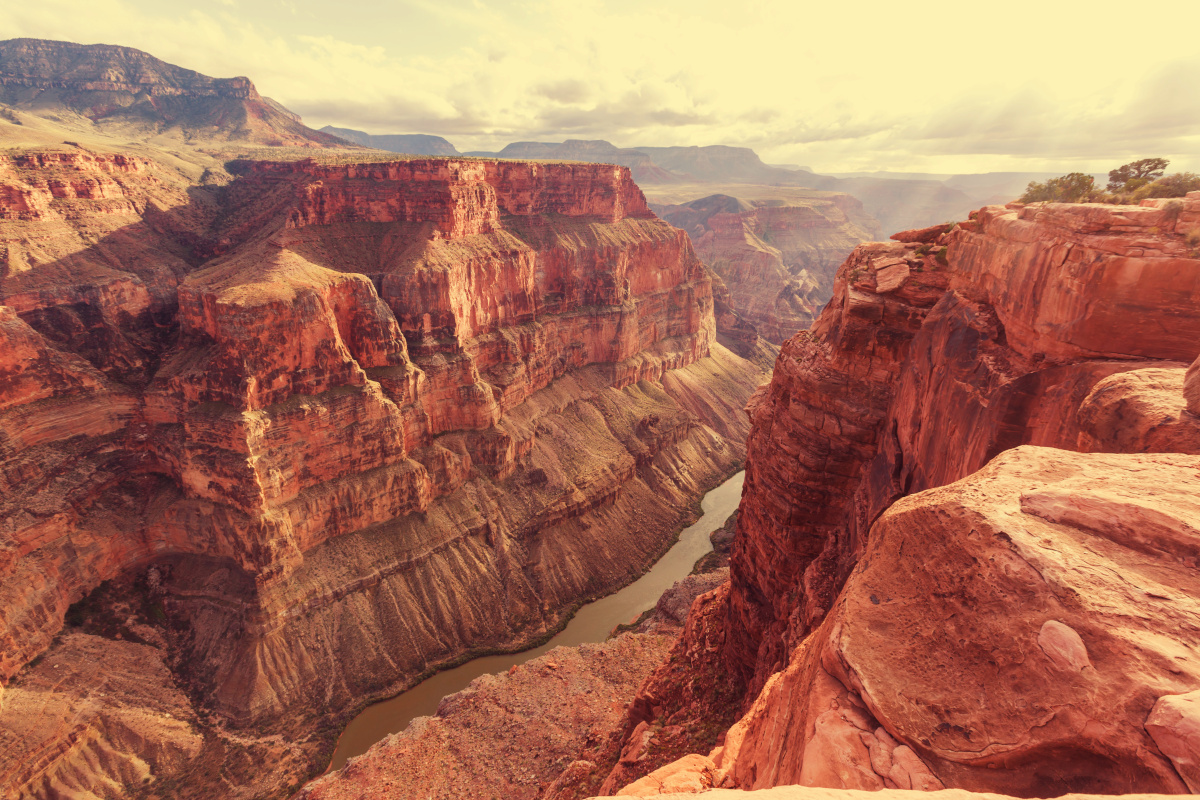
Is travel insurance necessary for Grand Canyon treks?
What happens if I collapse on a Trail?
Does insurance coverage help with trip delays from fire or flooding?
Is there coverage for lost trekking gear?
Which plan covers a Rim to Rim hike best?
Is U.S. domestic trekking covered by Redpoint?
Does your policy include trip cancellation?
Get Protected for Your Grand Canyon Trek
Hiking the Grand Canyon is unforgettable, but it’s also unpredictable. Heatstroke, injury, flash floods, lost gear, and trip delays are common challenges.
Before you step onto the South Kaibab or descend the Bright Angel Trail, make sure you’re covered.
While training is up to you, Redpoint can help keep you protected on your high-altitude trek with comprehensive travel insurance. Our international travel insurance plans — Ripcord, Cavalry, and Harbor — include medical care and emergency evacuation coverage in case anything goes wrong on your trek. Get a quote for your next trip today, and don’t leave sea level without it.


